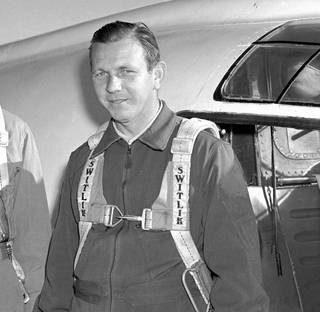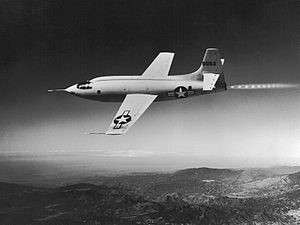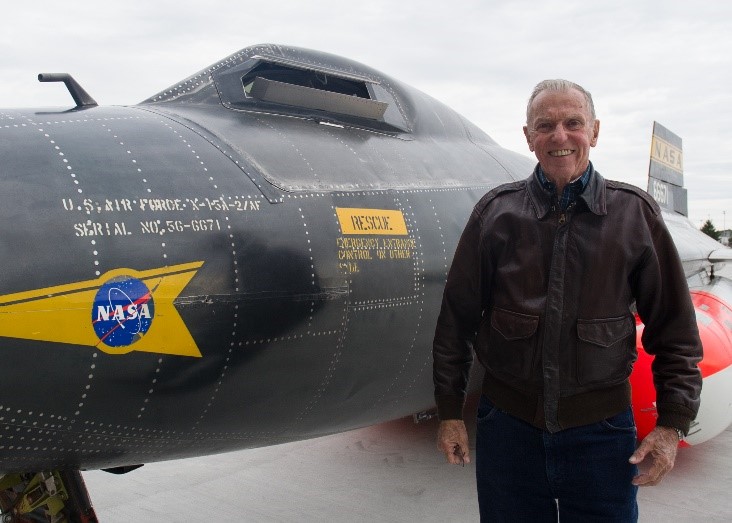70 years ago, first civilian breaks sound barrier…
Only Chuck Yeager had done what experimental test pilot Herbert Hoover accomplished that day. On March 10, 1948, Hoover became the first civilian and only the second pilot ever to break the sound barrier. Eight years earlier, Hoover had accepted a position with the National Advisory Committee for Aeronautics (NACA) in Hampton, VA, where he flew more than 100 different aircraft. In 1947, he joined the joint US Air Force-NACA transonic flight research program at the Muroc Flight Test Unit in California, now the Neil A. Armstrong Flight Research Center. The program used the Bell Aircraft-built XS-1 rocket engine powered aircraft, with Yeager serving as lead pilot for the Air Force and Hoover for the NACA. Dropped from a B-29 carrier airplane during flight, the XS-1 would light its rocket engines to accelerate to transonic and eventually supersonic speeds. On that day, during his 11th flight aboard the XS-1, Hoover’s aircraft reached Mach 1.065, approximately 703 miles per hour, and the NACA pilot entered the history books. Hoover made four more flights in the XS-1 before moving on to other programs. He died in a plane crash on August 14, 1952. A Bell XS-1 is on display at the Smithsonian Institution’s National Air and Space Museum’s Boeing Milestones of Flight exhibit.
The research techniques used for the X-1 program became the pattern for all subsequent X-craft projects, including the X-15 experimental aircraft for hypersonic flight research built by North American Aviation. NASA conducted the X-15 project with the Air Force and the Navy between 1959 and 1968, the plane setting unofficial world’s speed (4,520 miles per hour or Mach 6.7) and altitude (354,200 feet) records. Similar to the X-1 under the B-29, the X-15 was carried into the air under the wing of a B-52 and after release ignited its rocket engine to begin it supersonic flight. Twelve pilots from NASA, the Air Force, the Navy and North American made 199 flights in three X-15 aircraft.
One of those pilots was Joe Henry Engle, born in 1932 in Chapman, Kansas. Engle received his commission in the Air Force through the Reserve Office Training Corps at the University of Kansas and entered flying school in 1957, graduating from the US Air Force Test Pilot school in 1961. He was selected to fly the X-15 in June 1963 and completed 16 flights. On one of those flights, on June 29, 1965, Engle in his X-15 exceeded an altitude of 50 miles, which qualified him for US Air Force astronaut wings. He twice more repeated that accomplishment. He is the last surviving X-15 pilot.
In April 1966, Enlge was one of 19 astronauts selected by NASA. He served on support and backup Apollo crews before being selected as the Lunar Module Pilot on Apollo 17. However, after cancellation of the last three Apollo missions, NASA believed a scientist should fly on the final Moon landing mission and he was replaced by geologist-astronaut Harrison Schmitt. Engle went on to command two Approach and Landing Test free flights of the Space Shuttle Enterprise in 1977, and commanded the STS-2 Columbia and STS-51I Discovery missions. Engle retired from NASA and from the Air Force (as a Major General), but he is still active with NASA, serving as the technical advisor to the International Space Station Joint Commission.
To learn more about Herbert Hoover, read the oral histories with his widow, Ruth Hoover Smull, and fellow NACA pilot, Stefan Cavallo, please visit:
To read Joe Engle’s oral histories with the JSC History Office, please visit: https://www.jsc.nasa.gov/history/oral_histories/EngleJH/englejh.htm





























